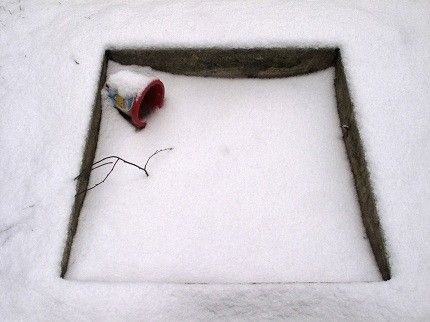Monday Books Blog Report: The Creative Sandbox, Pottermore, and an Author Who Did It First

Who gets to play in the creative sandbox?
In a chewy, discursive piece today which explores the cultural and publishing implications of a certain just-announced website, children's book author MG Harris writes that fans shouldn't be the only ones having inspired fun based on an original fiction story.
Authors might want to noodle around there too. And it doesn't have to detract from the creativity of fandom, Harris writes at her eponymous blog. Some fans enjoy defining a text by their own reading, to put it in the kind of language used by cultural studies mavens like Henry Jenkins. Equally, some fans want to probe further into the author's own vision of a world.
On the issue of fan fiction, and how much an author should try to control it, Harris says that she began her writing career as a textual poacher in the late 1990s, when she and a good friend started the first online Blake's 7 fan fiction zine.
Without the literary multi-gym of fan fiction, I would probably never have become a published author, says Harris, who is the creator of The Joshua Files children's book series. Doing fan fiction developed her as a writer and made her some wonderful friends, she says, So I'm in favor of the fan-created world. Long may it live!
And as a published author, Harris' work has sprawled in new directions through an alternate reality game, Josh's secret blog, and fan-created trailers and versions of that blog.
I think this is more than cool -- it's essential to real growth of a story. A story really only takes off when it has been poached, she says.
But authors should get to play too, and that's what Rowling is doing with Pottermore, which is her own personal sandbox, Harris concludes.
At his blog, author Will Granger makes no bones about Pottermore, saying that for the past several months he has been doing something similar at his Anabar Series blog, as he tries to make it an interactive immersive experience for readers with new written material, photos, a map, geographical info pages, and a journal. In total, the features will bring my stories to life, Granger says -- and they're fun.
I think Pottermore is great news for those of us trying to promote our e-books, he writes. Rowling injected a huge amount of legitimacy to e-books with her announcement. That can only help us all.
Here are some more quick hits from the books blogosphere today:
? Looks & Books takes a look at a series created by Italian artist Emanuela Ligabue called Fake Books: It's just what it sounds like. Each wooden book is hand-crafted and one-of-a-kind, and meant to decorate your home.
With e-readers and phone reading apps spreading, the blogger raises the question of whether the physical book is becoming more of a design statement than a vehicle for reading. Gasp! But she stays loyal with her conclusion.
? Rahma at Mystic Coffee shows a cool stop-motion animation short about a city of books. Whoever made it really likes Jonathan Franzen.
? My Books 24/7 suggests four titles for those looking to get some background in book form on Moammar Gadhafi.
? Kayla at Caught Between the Pages reviews the Charlie St. Cloud movie, with Zac Efron, saying she was pleasantly surprised with how true it stayed to the novel.
? And finally, Mark Noce writes about juggling reading several books at once. Right now he is reading three pieces of nonfiction, historical fiction, and science fiction.
What do you do when confronted with so many delectable reading choices in your busy schedule? he asks. Do you prefer to imbibe one book at a time or do you make exceptions for perusing more than one good read a day?
Edward B. Colby is the Books editor of the International Business Times.
Have suggestions for Tuesday's Books Blog Report? Email them to e.colby@ibtimes.com.
© Copyright IBTimes 2025. All rights reserved.





















